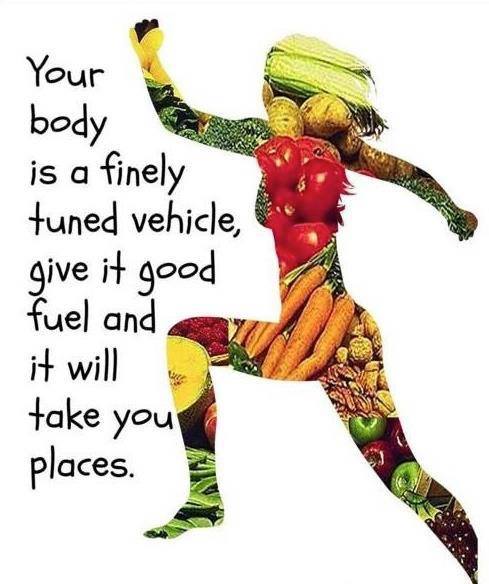SPORTS NUTRITION – Part II
 Guest post by Nutritionist, Mirela Burhuc*
Guest post by Nutritionist, Mirela Burhuc*
Sports Nutrition: are you doing it right or wrong? (Part 1)
Here I am again, this time with PART TWO of Sports Nutrition and I have promised will be back with new information regarding the macronutrients: carbohydrates, proteins and fats and also about PROTEIN POWDERS, to find out if they are healthy or dangerous for your body.
So, first of all I would like to make some light into the meaning and sources of these macronutrients.
Carbohydrates, proteins and fats are the nutrients that keep your body running, giving the energy for your daily needs.
CARBOHYDRATES come in 2 forms:
• Fast releasing called also simple carbohydrates and having a high glycemic index, having concentrated sources like sugar, honey, malt, sweets and most refined food, lacking in nutritional values and very high in calories but also natural sources like fruit, milk, some vegetables – these are better sources because are less likely to produce spikes in blood sugar levels, due to the fact that they contain other nutrients that work to control blood sugar level – the wisdom of nature, I should say.
• Slow releasing called also complex carbohydrates: whole grains, legumes, vegetables, nuts, seeds, having a low glycemic index.
PROTEINS have as food sources:
• Meat
• Fish
• Poultry
• Eggs
• Dairy products such as milk, cheese, yogurt
• Soy (non-animal source)
• Plant foods: pulses, grains
• Nuts
• Seeds
• Vegetables
One more thing to know about proteins is that the meat foods, dairy foods and eggs are considered sources of complete proteins, containing all the essential amino acids needed for human growth and health and the rest are part of what are called incomplete proteins because although they contain all the essential amino acids, they appear in smaller quantities and some of them lower in a particular amino acid.
This is why knowing how to combine food to get the complete proteins is very important. And I will give you few examples of combinations of incomplete proteins to make complete ones:
– Peanut butter on wholewheat bread/rice cakes
– Humus made from chickpeas and sesame paste
– Rice and beans
– Bean soup with wholewheat roll
FATS called also LIPIDS are found primarily in:
– Meats
– Dairy foods
– Nuts
– Seeds
These are what we call concentrated sources of fats but most foods contain some fat. And also, in addition to nuts and seeds, some of the vegetable sources rich in fats are soybeans, olives, peanuts, and avocados. The thing with fats is that if we store too much in our body, then we become obese and unhealthy BUT if we store less we become malnourished and unhealthy. So as you can see, balance is the key for a good health.

Now, many people eat just junk food most of time and we kind of moved away from the natural sources. Our food is mainly processed and refined and no wonder our body shrinks.
To start any kind of sport with no good nutritional base is very dangerous.
Also every type of sport requires specific food at specific times. And I will give you an example: WEIGHTLIFTERS need to take their calories mainly from carbohydrates – starches, secondly from fat and thirdly from protein. Why? Because during intense short-burst exercise, muscle burn up glucose anaerobically – without oxygen (if you remember what I have told you in Part 1) and this glucose is produced when starches or sugars are eaten. This being said, glucose is the only form of carbohydrate used directly by muscles for energy. It is also stored in the liver and muscles as glycogen and during exercise, glycogen is broken down to provide energy. Keep in mind that there is usually enough glycogen in the muscles for 90-120 minutes of exercise.
Regarding the timing, you should know that exercise requires specific food BEFORE, DURING – mainly fluids, due to perspiration and exertion to avoid dehydration (BUT don’t drink too much water; during exercise the drink has to be taken at regular intervals – about 200 ml every 30 minutes because if you drink more while sweating, you are at risk of low blood sodium levels – HYPONATREMIA and the symptoms include headache, nausea, fatigue, drowsiness, muscle weakness, muscle twitching or cramping, confusion, seizure, and possible coma) and AFTER – if the exercise was strenuous and lasted, you might need to restore the glycogen.
And again, every kind of sport requires specific nutritional guidance, the right amounts of protein, carbohydrate and fat, essential to boost performance and aid recovery, so please, ask a professional to guide you before getting into it.
Now, what about PROTEIN? We all heard that very active people need more protein. The level of protein need depends on the type of exercise (resistance or endurance), its intensity, duration.
It is true that protein is an important macronutrient that helps in building and maintaining lean muscle mass. Knowing that, the market started to be full with so called “handy” protein powders. And this is a very controversial subject nowadays because the truth behind it is quite nasty.
Let’s see first what these protein powders are made of and how are made:
They are made usually from milk, soy or eggs. The thing is that they are highly processed thus useless as a health supplement. The process involves heating the protein to a point that makes the body not to recognize it as food.
Besides that, many manufactures add synthetic, toxic ingredients like aspartame, fructose, artificial colors and all this toxic load can trigger an exaggerated immune response making the person develop food allergies.
Also, the protein shakes that contain lactose can produce bloating, diarrhea, abdominal pain, gas in some people who can not digest it properly.
Another danger is coming from the fact that being very easy to be consumed, most people take more from it than their body need in terms of protein and this can cause organ damage, especially kidney.
To add that most of protein powders are not tested for toxins or don’t fully disclose harmful ingredients? In most of them were found cadmium, arsenic, lead, mercury, all these dangerous heavy metals that can accumulate in the tissues over time and lead to chronic toxicity.
Some protein powders made from legumes contain protease inhibitors making the digestion of proteins very difficult and blocking the absorption of minerals.
Remember: your body needs a balanced diet in order to function properly and that includes all three types of macronutrients mentioned above. A surcharge of proteins can create imbalances in calcium, vitamin A, vitamin K, vitamin D creating thyroid issues, auto-immune disorders, heart arrhythmias, eye problems, bone loss and kidney issues.
My recommendation: play safe and get the protein from the REAL food. Don’t believe in magic pills, magic powders. It takes a balanced diet with unprocessed food to be healthy and strong!
Till next time, best of health and plenty of wisdom!
*Mirela Burhuc is a highly educated, strong mummy, with her driving force being the love for her son. She graduated as a teacher from the Faculty of Letters, History and Theology in Galati, Romania, and later on enrolled to the Faculty of Psychology and Sociology. Her studies were interrupted in 2008 when her child got diagnosed with Autism and ADHD (Attention Deficit Hyperactive Disorder), along with severe mental retardation and significant behavioural disturbance in a hospital for infantile psychiatry. A painful divorce followed shortly after, and since then on her life has followed many different routes. She now lives in Malta and works as a nutritionist; Diploma in Nutrition with Distinction by The Blackford Centre for Nutrition. To achieve the Diploma, she had to pass 15 written assignments, all based on practical, real life clients. You can read more about her story, her services, and get in touch with her on www.healthashore.com
Category: Guest posts




















Hi,
I need some guidance on sports nutrition, where can I contact you and maybe fix a meeting to see how to go about it?
I would also appreciate to have an idea of the price you charge.
Kind regards,
Nicholas